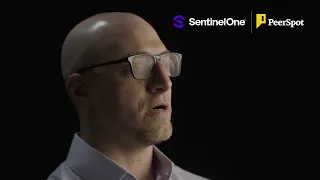We use SentinelOne Singularity Cloud Security to identify threats and vulnerabilities in our AWS accounts and the compute resources that are hosted on those cloud accounts.
We implemented SentinelOne Singularity Cloud Security to address network-related issues, such as communication between individual components (part-to-part or node communication). SentinelOne Singularity Cloud Security's Graph Explorer feature also helped us understand the overall network landscape, including the attack surface. This feature allows us to discover and explore various components within our AWS environment. In essence, SentinelOne Singularity Cloud Security helped us identify how different networks connect and how microservices within our system interact with each other.
We've implemented SentinelOne Singularity Cloud Security across all our core companies, including acquisitions. Previously, managing separate AWS accounts for each company with dedicated DevOps and security teams was a significant challenge. SentinelOne Singularity Cloud Security helped us consolidate these accounts into a single platform, simplifying the process. Now, we can easily track key security metrics. For instance, SentinelOne Singularity Cloud Security provides frequent alerts for critical events such as publicly exposed instances or security groups with significant traffic changes from any source. Monitoring these elements across multiple accounts and security groups was previously difficult without a centralized platform. SentinelOne Singularity Cloud Security has been instrumental in streamlining this process.
We recently made some changes to our information systems. SentinelOne Singularity Cloud Security helped identify instances that were inadvertently made public. This identification is important for compliance purposes, as it allows us to track how well these public instances adhere to regulatory frameworks.
SentinelOne Singularity Cloud Security's compliance monitoring capabilities have provided us with some benefits, particularly in understanding our overall security posture. However, it's important to note that SentinelOne Singularity Cloud Security only monitors our cloud infrastructure. There might be internal deployments with compensating controls that address missing controls identified by SentinelOne Singularity Cloud Security (e.g., control X is missing but mitigated by internal control Y). These internal controls wouldn't be visible to SentinelOne Singularity Cloud Security. Therefore, while SentinelOne Singularity Cloud Security provides a valuable starting point at the surface level, manual review is necessary to ensure complete compliance coverage.
SentinelOne Singularity Cloud Security is easy to navigate. Its menus are straightforward and intuitive, making the overall user experience smooth.
One of the key benefits of the evidence-based reporting is its proof of exploitability. This feature allows us to prioritize vulnerabilities that have been demonstrably compromised and take immediate action to mitigate the risks.
The offensive security engine feature constantly scans and lets us know if any vulnerabilities in our environment can be exploited. While the offensive security engine for verifying exploit paths and prioritizing breach control is valuable, it lacks context awareness. For instance, it might flag something we intentionally made public, like a new website for an upcoming event. In those cases, we can safely ignore the alert. Overall, the engine is a useful tool. We extract the information it provides and prioritize it. A dedicated team reviews the alerts and, if necessary, escalates them to our DevOps team for further action.
By centralizing cloud infrastructure monitoring with SentinelOne Singularity Cloud Security, our security team's productivity, and MTTR have been significantly improved.
Over time SentinelOne Singularity Cloud Security has reduced the number of false positives by 40 percent.
SentinelOne Singularity Cloud Security has significantly improved our organization's risk posture. Since implementing it, we've been able to assess the risk associated with recently discovered CVEs much faster than before. This efficiency is due to the proactive identification and scanning capabilities. Now, we start each day with a clear summary of potential risks, allowing us to prioritize effectively.
SentinelOne Singularity Cloud Security has reduced our mean time to detection by 90 percent. This is because it scans every day and sends us real-time email alerts, allowing us to take immediate action.
SentinelOne Singularity Cloud Security has reduced our mean time to remediation by 40 percent.
We have a dedicated channel where we collaborate with SentinelOne Singularity Cloud Security and our internal teams.
The collaboration helped save our engineering time by 60 percent.
The user interface and ease of use have had a positive impact on our security operations. For example, we recently needed a list of assets deployed in a specific GN in a cloud account for a particular incident. We went straight to SentinelOne Singularity Cloud Security and were able to quickly obtain the assets along with a map of the security groups linked to them. The UI's simplicity helped us save significant time by eliminating the need to search for information manually.
Notifications about the latest vulnerabilities are a valuable feature. SentinelOne Singularity Cloud Security automatically updates itself with the newest threats and scans our infrastructure across all integrated data accounts for them. This is helpful because it's difficult to keep up with the volume of CVEs, especially the critical ones.
The UI is responsive and user-friendly.
There's room for improvement in the graphic explorer. We'd like something that helps us visualize traffic between different ports and containers. Currently, we can see host networking, like communication between instances or perhaps within Kubernetes. However, we're looking for a tool that can also visualize port-to-port communication and display it as a graph. This would give us a clearer picture of our network traffic and help strengthen our network security.
The dashboard currently displays CVEs, but it would be beneficial to receive proactive email notifications in addition to this.
I would also like to have runtime security in SentinelOne Singularity Cloud Security.
I have been using SentinelOne Singularity Cloud Security for 7 months.
I would rate the stability of SentinelOne Singularity Cloud Security 9 out of 10.
I would rate the scalability of SentinelOne Singularity Cloud Security 8 out of 10. We can easily add new cloud accounts.
The technical support response time is good. For feature requests, they can be a little slow.
The time invested in security operations for threat detection and monitoring has yielded a return on investment of 70 percent. We've also seen a financial benefit by avoiding the need for additional staff to monitor and correlate all database accounts individually by 40 percent. SentinelOne Singularity Cloud Security automates these tasks efficiently.
SentinelOne Singularity Cloud Security is less expensive than other options.
I would rate SentinelOne Singularity Cloud Security 8 out of 10.
We're planning to integrate SentinelOne Singularity Cloud Security with our CI/CD pipeline and Slack. Currently, our only integration is with an email system, which means we receive alerts and notifications via email. We're evaluating the effectiveness of this approach. Integrating with tools like Jira or Slack could help manage the issue of false positives and notification overload, which currently requires the manual closing of alerts. We're still assessing the best course of action, but integration with Jira is a strong possibility.
Around 15 people from our security and DevOps teams use SentinelOne Singularity Cloud Security. SentinelOne Singularity Cloud Security is a SaaS that is integrated with our main company and all our acquisitions.
SentinelOne Singularity Cloud Security does not require maintenance from our end.
I recommend SentinelOne Singularity Cloud Security to others for its cloud security capabilities. I particularly appreciate its offensive security approach. Coming from an offensive security background, I find PingSentinelOne Singularity Cloud Securityafe excels at identifying real threats that we can address immediately. This proactive approach is a major advantage of SentinelOne Singularity Cloud Security. While the defensive side might involve some assumptions and possibilities, I believe the offensive capabilities are the key reason we use SentinelOne Singularity Cloud Security.











